High-Throughput Sequencing of Nontuberculous Mycobacterial Flora and Mycobacterium abscessus in Cattle
Simple Summary
Abstract
1. Introduction
2. Materials and Methods
2.1. Sample Collection
2.2. Environmental Samples Detection
2.3. High-Throughput Sequencing of 16S rDNA V3–V4 Region
2.4. Specific ASV Screening, Sequence Comparison, and Strain Identification
3. Results
3.1. Detection Results of Environmental Samples
3.2. Dilution Curve
3.3. Analysis of Intergroup Differences in Nasal Swab Samples and Rectal Swab Samples
3.4. Analysis of Mycobacterium ASVs in Different Groups
4. Discussion
5. Conclusions
Author Contributions
Funding
Institutional Review Board Statement
Informed Consent Statement
Data Availability Statement
Acknowledgments
Conflicts of Interest
References
- Fedrizzi, T.; Meehan, C.J.; Grottola, A.; Giacobazzi, E.; Serpini, G.F.; Tagliazucchi, S.; Fabio, A.; Bettua, C.; Bertorelli, R.; Sanctis, V.D.; et al. Genomic characterization of nontuberculous Mycobacteria. Sci. Rep. 2017, 7, 45258. [Google Scholar] [CrossRef] [PubMed]
- Johansen, M.D.; Herrmann, J.-L.; Kremer, L. Non-tuberculous mycobacteria and the rise of Mycobacterium abscessus. Nat. Rev. Microbiol. 2020, 18, 392–407. [Google Scholar] [CrossRef] [PubMed]
- Li, N.; Cai, Q.; Miao, Q.; Song, Z.; Fang, Y.; Hu, B. High-Throughput Metagenomics for Identification of Pathogens in the Clinical Settings. Small Methods 2020, 5, 2000792. [Google Scholar] [CrossRef] [PubMed]
- Prevots, D.R.; Marras, T.K. Epidemiology of Human Pulmonary Infection with Nontuberculous Mycobacteria. Clin. Chest Med. 2015, 36, 13–34. [Google Scholar] [CrossRef]
- Degiacomi, G.; Sammartino, J.C.; Chiarelli, L.R.; Riabova, O.; Makarov, V.; Pasca, M.R. Mycobacterium abscessus, an emerging and worrisome pathogen among cystic fibrosis patients. Int. J. Mol. Sci. 2019, 20, 5868. [Google Scholar] [CrossRef]
- Lopeman, R.C.; Harrison, J.; Desai, M.; Cox, J.A.G. Mycobacterium abscessus: Environmental bacterium turned clinical nightmare. Microorganisms 2019, 7, 90. [Google Scholar] [CrossRef]
- Lee, M.-R.; Sheng, W.-H.; Hung, C.-C.; Yu, C.-J.; Lee, L.-N.; Hsueh, P.-R. Mycobacterium abscessus complex infections in humans. Emerg. Infect. Dis. 2015, 21, 1638–1646. [Google Scholar] [CrossRef]
- Tortoli, E.; Kohl, T.A.; Brown-Elliott, B.A.; Trovato, A.; Leão, S.C.; Garcia, M.J.; Vasireddy, S.; Turenne, C.Y.; Griffith, D.E.; Philley, J.V.; et al. Emended description of Mycobacterium abscessus, Mycobacterium abscessus subsp. abscessus and Mycobacterium abscessus subsp. bolletii and designation of Mycobacterium abscessus subsp. massiliense comb. nov. Int. J. Syst. Evol. Microbiol. 2016, 66, 4471–4479. [Google Scholar] [CrossRef]
- Degiacomi, G.; Chiarelli, L.R.; Recchia, D.; Petricci, E.; Gianibbi, B.; Fiscarelli, E.V.; Fattorini, L.; Manetti, F.; Pasca, M.R. The Antimalarial Mefloquine Shows Activity against Mycobacterium abscessus, Inhibiting Mycolic Acid Metabolism. Int. J. Mol. Sci. 2021, 22, 8533. [Google Scholar] [CrossRef]
- Andrew, E.C.; Connell, T.; Robinson, P.; Curtis, N.; Massie, J.; Robertson, C.; Harrison, J.; Shanthikumar, S.; Bryant, P.A.; Starr, M.; et al. Pulmonary Mycobacterium abscessus complex in children with cystic fibrosis: A practical management guideline. J. Paediatr. Child Health 2019, 55, 502–511. [Google Scholar] [CrossRef]
- Mougari, F.; Guglielmetti, L.; Raskine, L.; Sermet-Gaudelus, I.; Veziris, N.; Cambau, E. Infections caused by Mycobacterium abscessus: Epidemiology, diagnostic tools and treatment. Expert. Rev. Anti-Infect. Ther. 2016, 14, 1139–1154. [Google Scholar] [CrossRef] [PubMed]
- Dorn, A.v. Multidrug-resistant Mycobacterium abscessus threatens patients with cystic fibrosis. Lancet Respir. Med. 2017, 5, 15. [Google Scholar] [CrossRef]
- Honda, J.R.; Virdi, R.; Chan, E.D. Global environmental nontuberculous Mycobacteria and their contemporaneous man-made and natural niches. Front. Microbiol. 2018, 9, 2029. [Google Scholar] [CrossRef]
- Gcebe, N.; Hlokwe, T.M. Non-tuberculous mycobacteria in South African wildlife: Neglected pathogens and potential impediments for bovine tuberculosis diagnosis. Front. Cell. Infect. Microbiol. 2017, 7, 15. [Google Scholar] [CrossRef] [PubMed]
- Wang, L.; Chen, Y.; Wang, Q.; Pan, J.; Bao, R.; Jin, W.; Yao, Y.; Fang, T.; Li, N.; Luan, S.; et al. Comparison of molecular testing methods for diagnosing non-tuberculous mycobacterial infections. Eur. J. Clin. Microbiol. Infect. Dis. 2024, 44, 109–116. [Google Scholar] [CrossRef] [PubMed]
- International Office of Epizootics Biological Standards Commission. Manual of Diagnostic Tests and Vaccines for Terrestrial Animals, 12th ed.; Office International des Épizooties: Paris, France, 2023. [Google Scholar]
- Marras, S.A.E.; Chen, L.; Shashkina, E.; Davidson, R.M.; Strong, M.; Daley, C.L.; Kreiswirth, B.N. A molecular-beacon-based multiplex real-Time PCR assay to distinguish Mycobacterium abscessus subspecies and determine macrolide susceptibility. J. Clin. Microbiol. 2021, 59, e0045521. [Google Scholar] [CrossRef]
- Zeng, W.; Zhang, Y.; Zhao, X.; Huang, G.; Jiang, Y.; Dong, H.; Li, X.; Wan, K.; He, C. Occurrence of non-tuberculous mycobacteria species in livestock from northern China and first isolation of Mycobacterium caprae. Epidemiol. Infect. 2013, 141, 1545–1551. [Google Scholar] [CrossRef]
- Jenkins, A.O.; Gormley, E.; Gcebe, N.; Fosgate, G.T.; Conan, A.; Aagaard, C.; Michel, A.L.; Rutten, V.P.M.G. Cross reactive immune responses in cattle arising from exposure to Mycobacterium bovis and non-tuberculous mycobacteria. Prev. Vet. Med. 2018, 152, 16–22. [Google Scholar] [CrossRef]
- Vordermeier, H.M.; Brown, J.; Cockle, P.J.; Franken, W.P.J.; Drijfhout, J.W.; Arend, S.M.; Ottenhoff, T.H.M.; Jahans, K.; Hewinson, R.G. Assessment of cross-reactivity between Mycobacterium bovis and M. kansasii ESAT-6 and CFP-10 at the T-Cell epitope level. Clin. Vaccine Immunol. 2007, 14, 1203–1209. [Google Scholar] [CrossRef]
- Bisognin, F.; Ferraro, V.; Sorella, F.; Lombardi, G.; Lazzarotto, T.; Monte, P.D. First isolation of Mycobacterium saskatchewanense from medical devices. Sci. Rep. 2023, 13, 21628. [Google Scholar] [CrossRef]
- Kim, M.; Yang, M.-S.; Son, J.; Rhim, H.; Jeong, T.-W.; Kim, B.; Ik-Han, J. Systemic infection of Mycobacterium abscessus in a free-ranging wild Eurasian Eagle Owl (Bubo bubo). J. Wildl. Dis. 2022, 58, 926–930. [Google Scholar] [CrossRef] [PubMed]
- Rodríguez-Cerdeira, C.; Hernández-Castro, R.; Sánchez-Cárdenas, C.D.; Arenas, R.; Meza-Robles, A.; Toussaint-Caire, S.; Atoche-Diéguez, C.; Martínez-Herrera, E. Atypical Mycobacteriosis due to Mycobacterium abscessus subsp. massiliense: Our experince. Pathogens 2022, 11, 1399. [Google Scholar] [CrossRef]
- Ali, Z.I.; Hanafy, M.; Hansen, C.; Saudi, A.M.; Talaat, A.M. Genotypic analysis of nontuberculous mycobacteria isolated from raw milk and human cases in Wisconsin. J. Dairy Sci. 2021, 104, 211–220. [Google Scholar] [CrossRef]
- Soliman, N.S.; Soliman, M.S.; Khairat, S.M.; Gad, M.A.; Shawky, S.; Elkholy, A.A. Genetic diversities and drug resistance in Mycobacterium bovis isolates from zoonotic tuberculosis using whole genome sequencing. BMC Genom. 2024, 25, 1024. [Google Scholar] [CrossRef]
- Lin, Q.; Yao, Y.; Li, X.; Zhang, S.; Guo, H.; Ma, X.; Chen, W.; Ru, C.; Wang, L.; Wang, B.; et al. The application of nanopore targeted sequencing for pathogen diagnosis in bronchoalveolar lavage fluid of patients with pneumonia: A prospective multicenter study. Infect. Dis. 2024, 56, 128–137. [Google Scholar] [CrossRef] [PubMed]
- Huang, C.; Huang, Y.; Wang, Z.; Lin, Y.; Li, Y.; Chen, Y.; Chen, X.; Zhang, C.; Li, W.; Zhang, W.; et al. Multiplex PCR-based next generation sequencing as a novel, targeted and accurate molecular approach for periprosthetic joint infection diagnosis. Front. Microbiol. 2023, 14, 1181348. [Google Scholar] [CrossRef]
- Miao, Q.; Ma, Y.; Wang, Q.; Pan, J.; Zhang, Y.; Jin, W.; Yao, Y.; Su, Y.; Huang, Y.; Wang, M.; et al. Microbiological Diagnostic Performance of Metagenomic Next-generation Sequencing When Applied to Clinical Practice. Clin. Infect. Dis. 2018, 67, S231–S240. [Google Scholar] [CrossRef]
- Choi, H.; Kim, S.-Y.; Lee, H.; Jhun, B.W.; Park, H.Y.; Jeon, K.; Kim, D.H.; Huh, H.J.; Ki, C.-S.; Lee, N.Y.; et al. Clinical Characteristics and Treatment Outcomes of Patients with Macrolide-Resistant Mycobacterium massiliense Lung Disease. Antimicrob. Agents Chemother. 2017, 61, e02189-16. [Google Scholar] [CrossRef]
- Daley, C.L.; Iaccarino, J.M.; Lange, C.; Cambau, E.; Wallace, R.J.; Andrejak, C.; Böttger, E.C.; Brozek, J.; Griffith, D.E.; Guglielmetti, L.; et al. Treatment of nontuberculous mycobacterial pulmonary disease: An official ATS/ERS/ESCMID/IDSA clinical practice guideline. Eur. Respir. J. 2020, 56, 2000535. [Google Scholar] [CrossRef]
- Asakura, T.; Nakagawa, T.; Suzuki, S.; Namkoong, H.; Morimoto, K.; Ishii, M.; Kurashima, A.; Betsuyaku, T.; Ogawa, K.; Hasegawa, N. Efficacy and safety of intermittent maintenance therapy after successful treatment of Mycobacterium avium complex lung disease. J. Infect. Chemother. 2019, 25, 218–221. [Google Scholar] [CrossRef]
- Moon, S.M.; Yoo, I.Y.; Huh, H.J.; Lee, N.Y.; Jhun, B.W. Intermittent Treatment with Azithromycin and Ethambutol for Noncavitary Mycobacterium avium Complex Pulmonary Disease. Antimicrob. Agents Chemother. 2019, 64, e01787-19. [Google Scholar] [CrossRef]
- Yamada, K.; Seki, Y.; Nakagawa, T.; Hayashi, Y.; Yagi, M.; Ogawa, K. Outcomes and risk factors after adjuvant surgical treatments for Mycobacterium avium complex lung disease. Gen. Thorac. Cardiovasc. Surg. 2019, 67, 363–369. [Google Scholar] [CrossRef] [PubMed]
- Mitchell, J.D. Surgical Treatment of Pulmonary Nontuberculous Mycobacterial Infections. Thorac. Surg. Clin. 2019, 29, 77–83. [Google Scholar] [CrossRef] [PubMed]
- Lombard, J.E.; Patton, E.A.; Gibbons-Burgener, S.N.; Klos, R.F.; Tans-Kersten, J.L.; Carlson, B.W.; Keller, S.J.; Pritschet, D.J.; Rollo, S.; Dutcher, T.V.; et al. Human-to-Cattle Mycobacterium tuberculosis Complex Transmission in the United States. Front. Vet. Sci. 2021, 8, 691192. [Google Scholar] [CrossRef]
- Rodwell, T.C.; Kapasi, A.J.; Moore, M.; Milian-Suazo, F.; Harris, B.; Guerrero, L.P.; Moser, K.; Strathdee, S.A.; Garfein, R.S. Tracing the origins of Mycobacterium bovis tuberculosis in humans in the USA to cattle in Mexico using spoligotyping. Int. J. Infect. Dis. 2010, 14 (Suppl. S3), e129–e135. [Google Scholar] [CrossRef]
- Romero, B.; Rodríguez, S.; Bezos, J.; Díaz, R.; Copano, M.F.; Merediz, I.; Mínguez, O.; Marqués, S.; Palacios, J.J.; García de Viedma, D.; et al. Humans as source of Mycobacterium tuberculosis infection in cattle, Spain. Emerg. Infect. Dis. 2011, 17, 2393–2395. [Google Scholar] [CrossRef]
- Gumi, B.; Schelling, E.; Berg, S.; Firdessa, R.; Erenso, G.; Mekonnen, W.; Hailu, E.; Melese, E.; Hussein, J.; Aseffa, A.; et al. Zoonotic transmission of tuberculosis between pastoralists and their livestock in South-East Ethiopia. EcoHealth 2012, 9, 139–149. [Google Scholar] [CrossRef] [PubMed]
- Malama, S.; Munyeme, M.; Mwanza, S.; Muma, J.B. Isolation and characterization of non tuberculous mycobacteria from humans and animals in Namwala District of Zambia. BMC Res. Notes 2014, 7, 622. [Google Scholar] [CrossRef]
- Prasad, H.K.; Singhal, A.; Mishra, A.; Shah, N.P.; Katoch, V.M.; Thakral, S.S.; Singh, D.V.; Chumber, S.; Bal, S.; Aggarwal, S.; et al. Bovine tuberculosis in India: Potential basis for zoonosis. Tuberculosis 2005, 85, 421–428. [Google Scholar] [CrossRef]
- Adesokan, H.K.; Akinseye, V.O.; Streicher, E.M.; Van Helden, P.; Warren, R.M.; Cadmus, S.I. Reverse zoonotic tuberculosis transmission from an emerging Uganda I strain between pastoralists and cattle in South-Eastern Nigeria. BMC Vet. Res. 2019, 15, 437. [Google Scholar] [CrossRef]
- Parsons, S.D.; Warren, R.M.; Ottenhoff, T.H.; Gey van Pittius, N.C.; van Helden, P.D. Detection of Mycobacterium tuberculosis infection in dogs in a high-risk setting. Res. Vet. Sci. 2012, 92, 414–419. [Google Scholar] [CrossRef] [PubMed]
- Payeur, J.B.; Jarnagin, J.L.; Marquardt, J.G.; Whipple, D.L. Mycobacterial isolations in captive elephants in the United States. Ann. N. Y. Acad. Sci. 2002, 969, 256–258. [Google Scholar] [CrossRef] [PubMed]


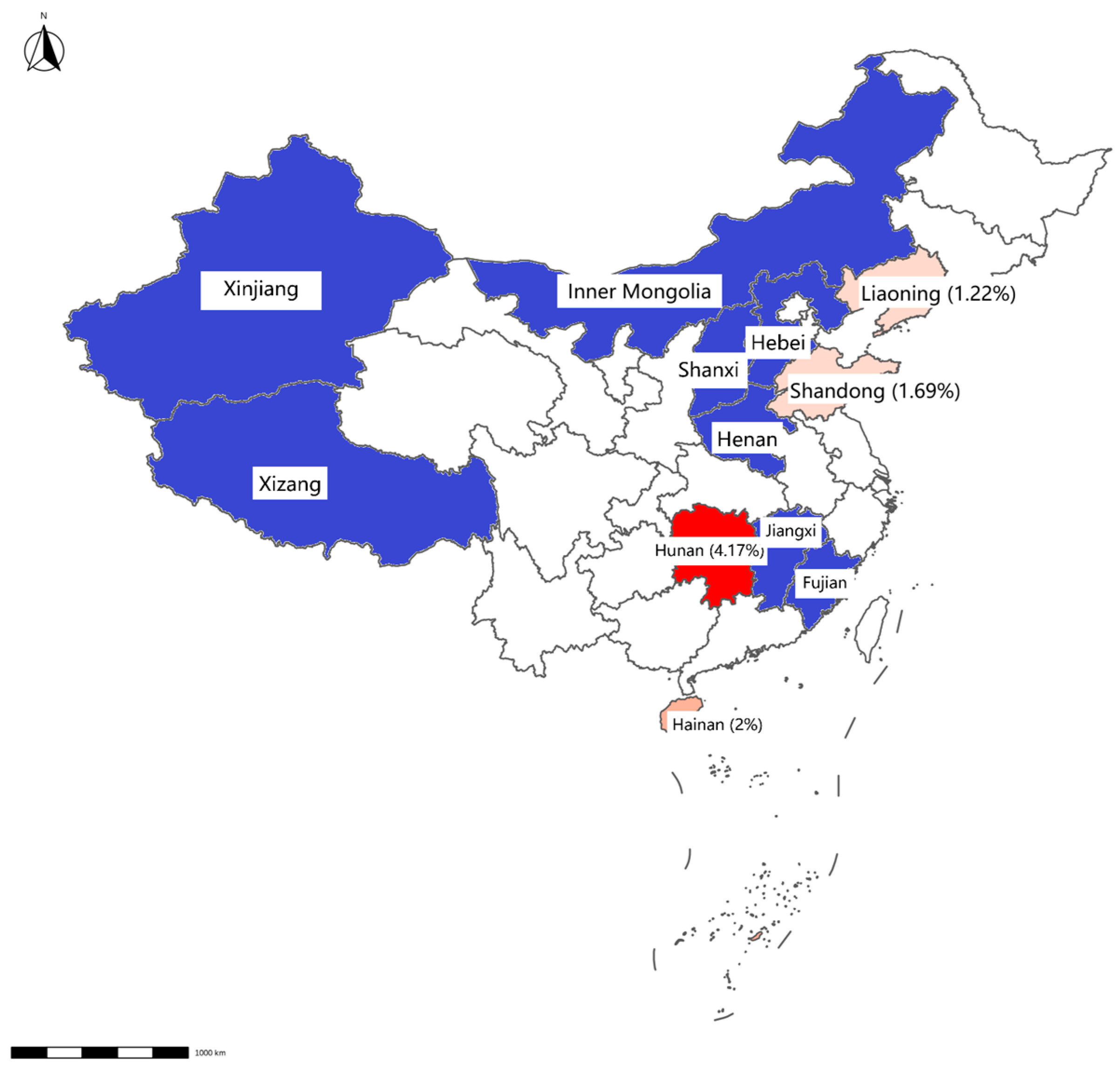
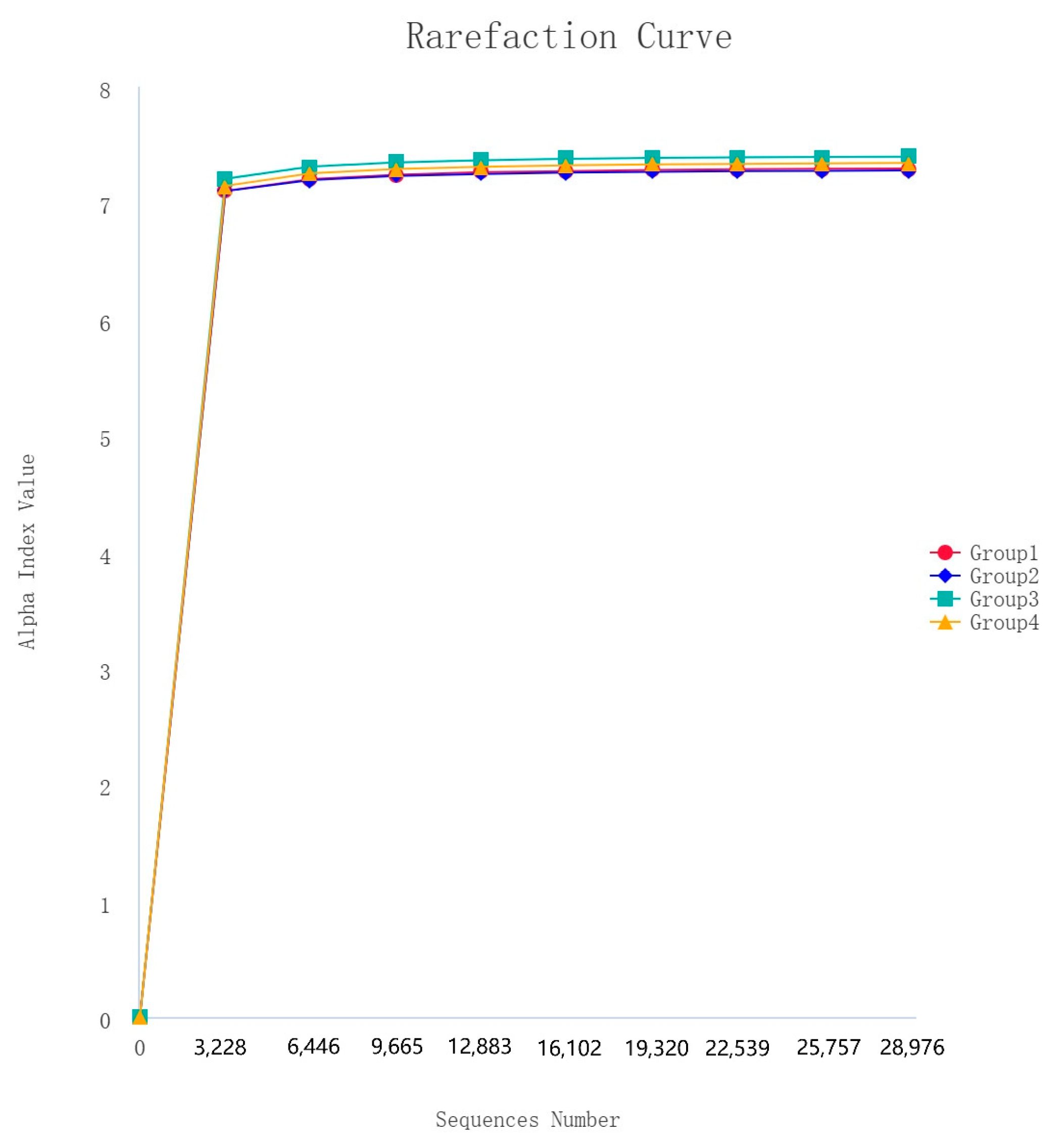
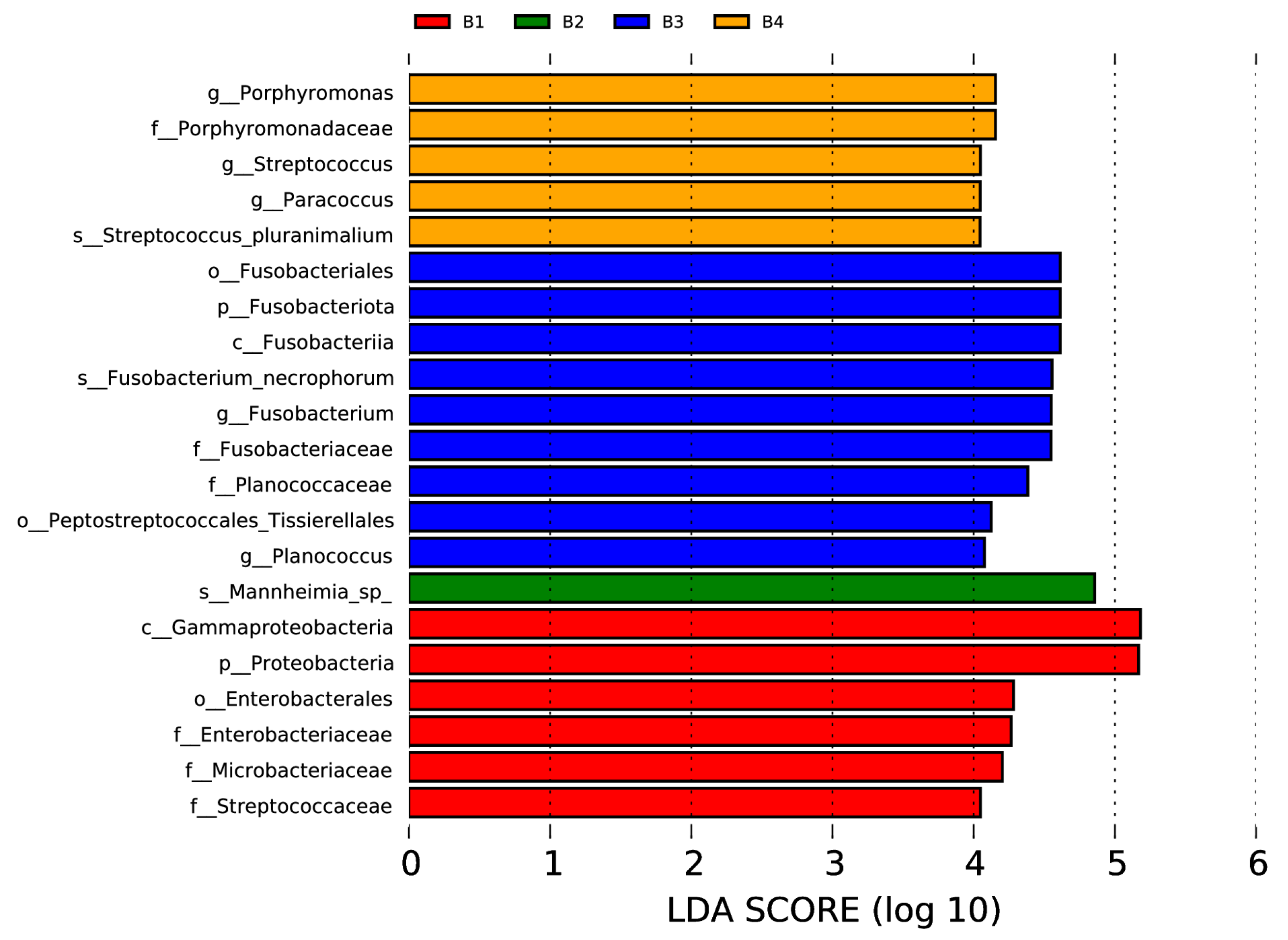
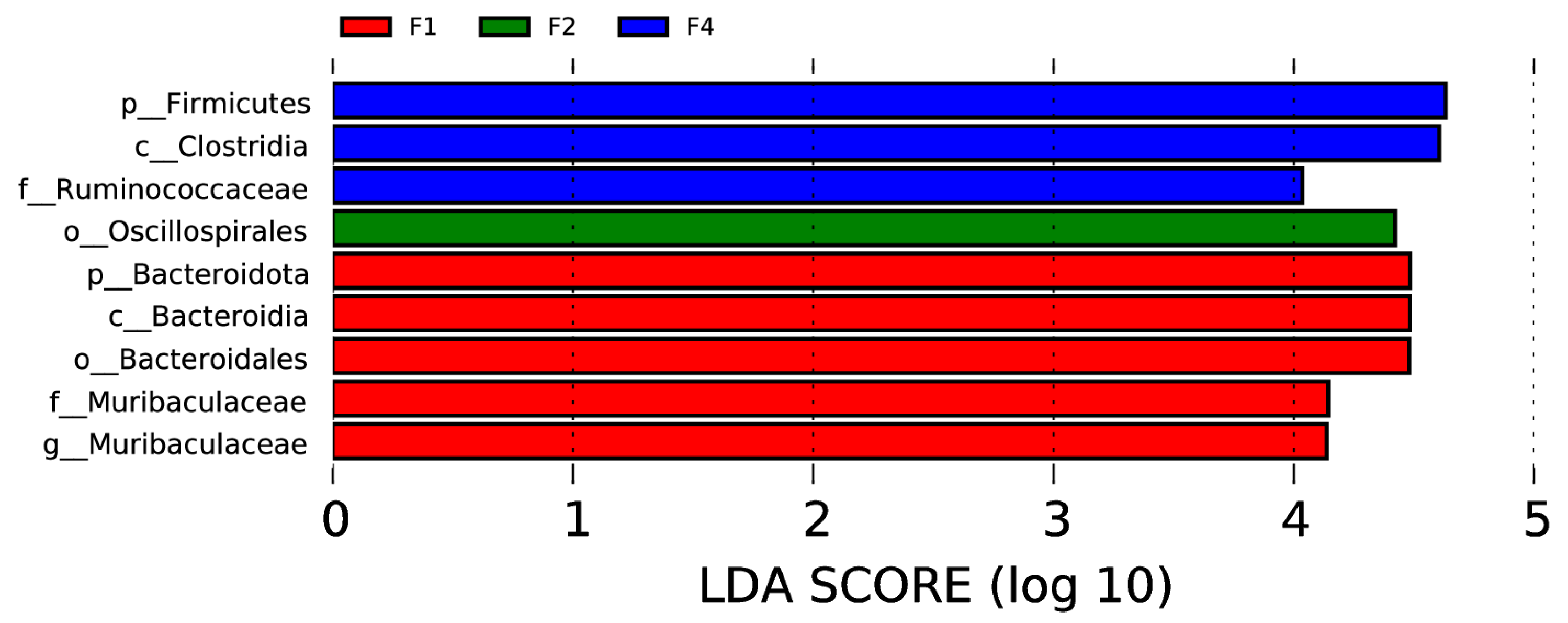
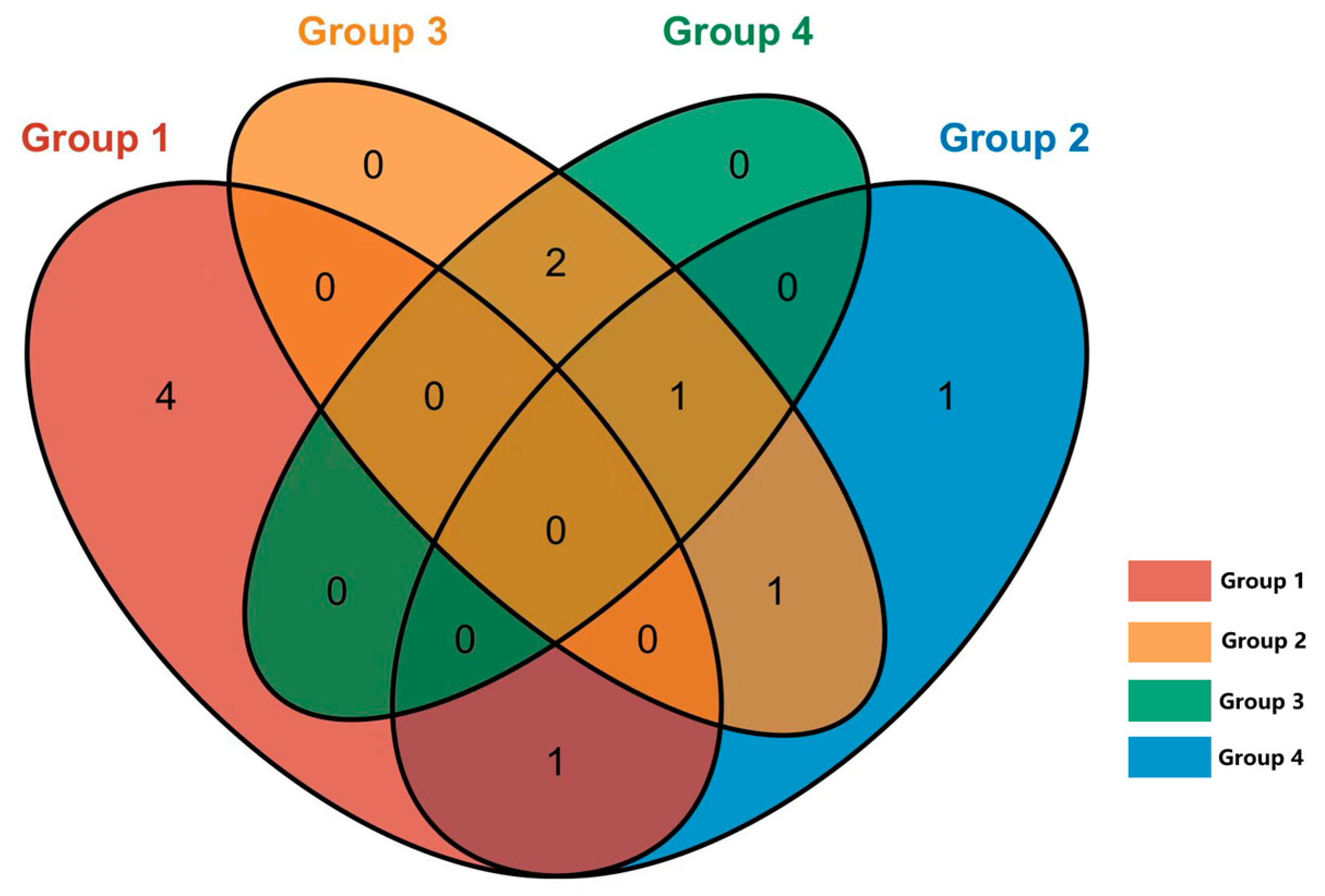
| Groups | IGRA Result | CFT Result |
|---|---|---|
| Group 1 | M. bovis positive | Positive |
| Group 2 | M. avium positive | Positive |
| Group 3 | Negative | Positive |
| Group 4 | Negative | Negative |
| Primer | Primer Sequences (5′-3′) | Primer Length (bp) |
|---|---|---|
| Mab 2830-F | CCTCATCGAGGACGGTCAGA | 20 |
| 2830 abs-Probe | CCGTCGCGAGGCCGGCATCGGCGCACGACGG | 31 |
| Mab 2830-R | CACGAATCCGGGCAGCAATA | 20 |
| Province | No. of Samples | Positive Rate of Mab (%) | ||
|---|---|---|---|---|
| Cattle Farms | Slaughterhouses | Cattle Farms | Slaughterhouses | |
| Fujian | 60 | 144 | 0.00% (0/60) | 0.00% (0/144) |
| Hainan | 72 | 100 | 1.39% (1/72) | 2.00% (2/100) |
| Henan | 67 | 100 | 0.00% (0/67) | 0.00% (0/100) |
| Hunan | 66 | 120 | 0.00% (0/66) | 4.17% (5/120) |
| Hebei | 59 | 80 | 0.00% (0/59) | 0.00% (0/80) |
| Shanxi | 60 | 20 | 0.00% (0/60) | 0.00% (0/20) |
| Shandong | 59 | 59 | 0.00% (0/59) | 1.69% (1/59) |
| Liaoning | 58 | 82 | 0.00% (0/58) | 1.22% (1/82) |
| Xinjiang | 61 | 120 | 1.64% (1/61) | 0.00% (0/120) |
| Inner Mongolia | 60 | 25 | 1.67% (1/60) | 0.00% (0/25) |
| Xizang | 46 | 43 | 0.00% (0/46) | 0.00% (0/43) |
| Jiangxi | 52 | 35 | 0.00% (0/52) | 0.00% (0/35) |
| Total | 720 | 928 | 0.42% (3/720) | 0.87% (9/928) |
Disclaimer/Publisher’s Note: The statements, opinions and data contained in all publications are solely those of the individual author(s) and contributor(s) and not of MDPI and/or the editor(s). MDPI and/or the editor(s) disclaim responsibility for any injury to people or property resulting from any ideas, methods, instructions or products referred to in the content. |
© 2025 by the authors. Licensee MDPI, Basel, Switzerland. This article is an open access article distributed under the terms and conditions of the Creative Commons Attribution (CC BY) license (https://creativecommons.org/licenses/by/4.0/).
Share and Cite
Chen, S.; Liu, M.; Li, Y.; Zhang, J.; Li, Y.; Liang, Y.; Fan, X.; Qu, Y. High-Throughput Sequencing of Nontuberculous Mycobacterial Flora and Mycobacterium abscessus in Cattle. Vet. Sci. 2025, 12, 275. https://doi.org/10.3390/vetsci12030275
Chen S, Liu M, Li Y, Zhang J, Li Y, Liang Y, Fan X, Qu Y. High-Throughput Sequencing of Nontuberculous Mycobacterial Flora and Mycobacterium abscessus in Cattle. Veterinary Sciences. 2025; 12(3):275. https://doi.org/10.3390/vetsci12030275
Chicago/Turabian StyleChen, Siqi, Mengda Liu, Yan Li, Jiarui Zhang, Yanfang Li, Yan Liang, Xiaoxu Fan, and Yonggang Qu. 2025. "High-Throughput Sequencing of Nontuberculous Mycobacterial Flora and Mycobacterium abscessus in Cattle" Veterinary Sciences 12, no. 3: 275. https://doi.org/10.3390/vetsci12030275
APA StyleChen, S., Liu, M., Li, Y., Zhang, J., Li, Y., Liang, Y., Fan, X., & Qu, Y. (2025). High-Throughput Sequencing of Nontuberculous Mycobacterial Flora and Mycobacterium abscessus in Cattle. Veterinary Sciences, 12(3), 275. https://doi.org/10.3390/vetsci12030275








